San Jose Sharks: Who Should Start in Goal This Season?

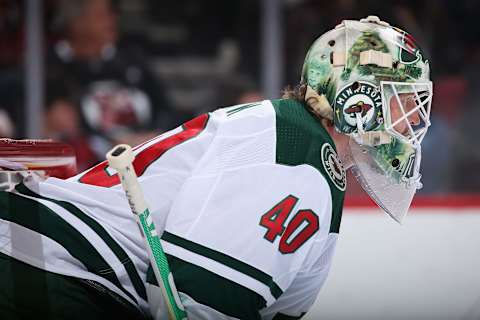
How do you solve a problem like the San Jose Sharks’ problematic goaltending?
Throughout the entirety of the National Hockey League, strong goaltending tandems seem to be shaping the way. In a year in which more games could be played in a short amount of time, having two capable netminders may be the deciding factor for a team’s success. However, out in San Jose, the goaltending position is a bit fragile.
Whether it be 6th-year Shark Martin Jones, who has posted back-to-back seasons with a save percentage under .900, or recently acquired 34-year old Devan Dubnyk, who lost his starting job with the Minnesota Wild in 2019-20, there is a major question mark when discussing which one of these netminders deserves to start in goal when the season begins.
Let’s take a look at both candidates, delve into the underlying stats, crunch the numbers and then present a final verdict…
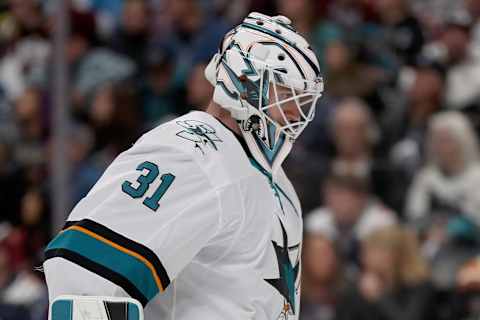
Martin Jones
In his first NHL season back with the Los Angeles Kings in 2013, Martin Jones took the league by storm. In 18 starts, he posted a 12-6 record, with a .934 SV% and an astonishing 1.81 GAA.
Although the sample size was rather small, it seemed like the then 24-year old had a bright future ahead of him. With franchise netminder Jonathan Quick the mainstay in net until he hangs up the skates, Jones was never going to get his chance at being the go-to guy. He knew it and the team knew it.
After the 2014-15 season, in which Jones put up strong numbers yet again with a .924 SV% and a 2.24 GAA with a 4-5-2 record, he was dealt to the San Jose Sharks, as this team was in need of a starting netminder following the departure of fan-favorite Antti Niemi.
In his first year, the 2015-16 season, Jones seemed to be the answer as his team finished the season third in the Pacific Division, before going on a magical run to the Stanley Cup Finals. Unfortunately, they met up against a hot Pittsburgh Penguins team, destined to pick up their first of what would be consecutive championships, as they beat Jones and the Sharks in six games to clinch Sidney Crosby‘s second Stanley Cup ring.
But Jones was electric that whole postseason, posting a .923 SV% with a 2.16 GAA and a 14-10-0 record.
Since that long run, we have watched Jones’ numbers decrease incrementally during the regular season. While his play was in fact good enough to get the team into the postseason in three consecutive years after that run to the Stanley Cup Final, his Playoff numbers started to drop off dramatically as well.
The last two regular seasons for the Vancouver native have been a nightmare, averaging a save percentage of .896, with an inflated goals-against average of 2.97.
Hi here's just one of the FIFTY-EIGHT saves Martin Jones made tonight (a franchise record, by the way). #GameOfJones | #PlayoffMode pic.twitter.com/fJpAaT7bJf
— San Jose Sharks (@SanJoseSharks) April 22, 2019
On some nights he shows how dominant he can be in the crease. But, on other nights, the majority of nights no less, he was notably less than impressive.
Despite his struggles, the team was ever so close to getting back to the Stanley Cup Finals during the 2018-19 season, losing to the eventual winners, the St Louis Blues four games to two in the Western Conference Finals. Jones was very weak in net, seeing his regular season struggles carry over with a .898 SV% and a 3.02 GAA.
This past season, the Sharks finished 29th in the league, making Jone’s struggles that more noticeable, with the fallen star posting a woeful 17-21-2 record with a .896 Save Percentage and a 3.00 Goals Against Average. The team had lost captain Joe Pavelski and it looked like the ship was sinking.
With Jones playing to the lowest of levels there was little relief, as his backup Aaron Dell was no better over the last two years. With Dell gone, the team had the option of signing a multitude of backup netminders in free agency, yet decided to acquire a starting netminder instead.
I believe GM Doug Wilson did this in an effort to push Jones to be better or suffer the consequences of being demoted to a backup role.

Devan Dubnyk
Devan Dubnyk’s path to success at the NHL level is one of hardships and failures. After trying to make a name for himself with the Edmonton Oilers for the first five years of his career, it seemed that he was never going to be a starter.
After making stops in Nashville and Montreal with the Predators and Canadiens respectively, he got a small chance to prove his worth with the Arizona Coyotes. Only playing 19 games, he started to receive some attention as he posted a 9-5-2 record, with a .916 VS% and a 2.72 GAA, his best stretch that calendar year.
The Minnesota Wild came calling at the 2014-15 Trade Deadline as they had goaltending issues of their own. Their best netminder Josh Harding was playing phenomenally, but sadly was diagnosed with MS, causing him to miss time and eventually deciding to hang the skates up.
A young Darcy Kuemper was struggling at the NHL level and veteran Nicklas Backstrom, the goaltender not the forward on Washington, was not getting any younger.
This was Dubnyk’s last chance to prove he had what it took to be a starter. And he answered the bell.
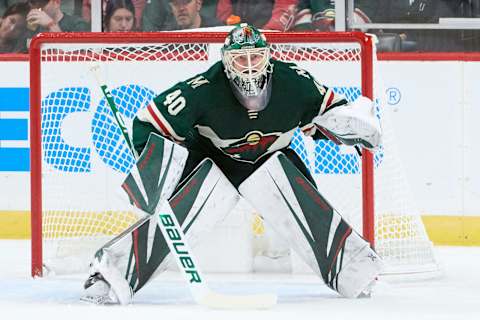
He single-handedly saved the Wild’s 2014-15 season, sneaking them into the second wild-card spot after posting a 27-9-2 record with a .936 Save Percentage and a 1.82 Goals Against Average, both career-highs. He came away with the Bill Masterton Trophy, which is awarded to the player that best exemplifies perseverance, sportsmanship, and a dedication to the sport of hockey. He saved 22.82% more goals than the average netminder that year, coming in third place for the Vezina Trophy.
His numbers took a step back once the postseason began, however, owning a 2.52 GAA with a .908 SV%, as the team made it to the Second-Round, before being swept in four games by the Chicago Blackhawks. But the way he put the team on his back cannot, and should not, be overlooked.
The team awarded the then 29-year old with a six-year deal, worth $26 million. Over the next four years, Dubnyk was the staple in net for Minnesota, averaging a .918 SV%, with a GAA of 2.41. The team was Playoff bound the next two seasons, before failing to make it in 2018-19, his worst season in the State of Hockey up to that point, although Dubnyk was named to the All-Star team that year.
Things would get significantly worse, however.
This past season reminded us of the Devan Dubnyk from 2013, as he showed no signs of confidence in his game. He posted an .890 SV% and a 3.35 GAA with a 12-15-2 record, and was one of the worst goaltenders statistically.
It got so bad that backup Alex Stalock, who was playing quite well, was named the starter, playing the majority of games in the second-half of the 2019-20 regular season and all of the games inside The Bubble in Edmonton. With a new General Manager in place in Bill Guerin and a new Head Coach in Dean Evason behind the bench following the Bruce Boudreau firing in February, this team was looking to make necessary changes.
NHL Network reported that Dubnyk could in fact be on the move.
Devan Dubnyk could be on the move. #NHLNow pic.twitter.com/1kKQHFqdbh
— NHL Network (@NHLNetwork) October 2, 2020
Could he still be a difference maker, or were his best days truly behind him?
The Sharks elected to take a chance given their issues with Jones. It only cost them a Fifth Round pick in 2022, as well as the one year remaining on his contract with $4.33 million cap hit.
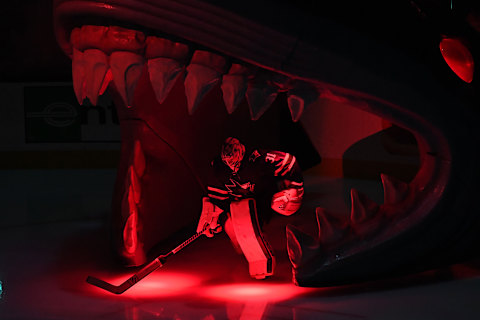
Advanced Statistics courtesy of Natural Stat Trick
When looking at a netminder’s worth, the common statistics tell part of the story, but not the whole thing. Let’s keep in mind that the San Jose Sharks allowed 30.6 shots per game last season, which led to the team allowing 225 goals, the third-highest in the NHL. Although the netminding was bad, the team did not do an outstanding job at protecting their goaltenders.
Let’s dive into some advanced statistics, all per Natural Stat Trick, taking a look at Jones first. Throughout his horrid season, Jones faced 1,140 shots, which comes out to 27.8 shots per game. He owned a -5.29 Goals Saved Above Average (GSAA) over the 41 games he played, while 339 of the shots he faced were High Danger Chances as he stopped 281 of them. He accumulated an .829 High Danger Save % (HDSV%) and a 1.49 High Danger GAA (HDGAA). His High Danger GSAA (HDGSAA) was a 3.20.
Devan Dubnyk, meanwhile, faced 849 shots last season in 30 games played, which comes out to 28.3 shots per game. He posted a -10.24 GSAA. Out of those 849 shots, 186 of them were High Danger Chances, with Dubnyk stopping 137. Those numbers equate to a .737 HDSV% and a 1.77 HDGAA. His HDGSAA was a -3.15, a major difference to that of Jones.
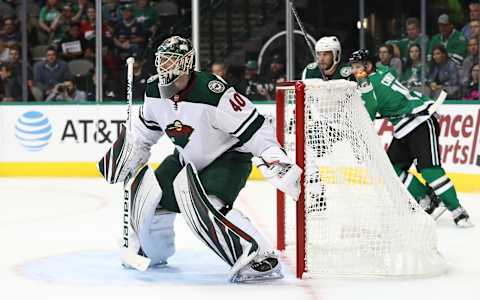
So this begs another question. What would you rather have, a goaltender with solid regular statistics who stops more of the High Danger Chances against or a goaltender that was weak in regards to regular statistics but stopped the Higher Danger Chances at an elevated rate?
I think we can all agree that we would rather have the latter.
Taking everything into consideration, I believe Devan Dubnyk gets the starting job. His High Danger stats are weaker than Jones’, but he has been the more consistent guy in net, having just one tough season over his last six campaigns.
For a team looking to get back to being a competitive force in the west, only a few years and a few players removed from dominancy, they will need both these netminders to step up. Given how this might not be a full 82-game season, each game will be more important than ever.
Head coach Bob Boughner, who became the Interim Coach last season for the final 37 games, has a tough decision to make. Under him the team played to a tune of 14-20-3, but the Sharks looked better structurally, and that will only improve with a healthy Erik Karlsson manning the blueline.
Next. Flyers, Penguins could be split up due to realignment. dark
And, while Karlsson may not be the same player he once was, having him healthy for the first time in a Sharks uniform will only help calm this entire group down. Do not forget that Patrick Marleau is back with the Sharks after three seasons and his leadership should help the young guys on the team take the necessary next steps in their careers.
But, if the San Jose Sharks are to make a quick return to the postseason then they will need good goaltending from both Martin Jones and Devan Dubnyk.